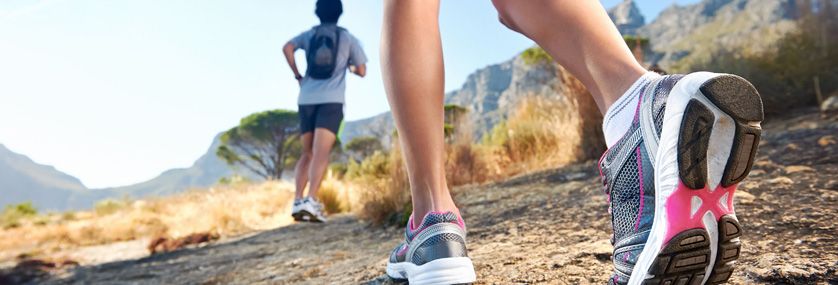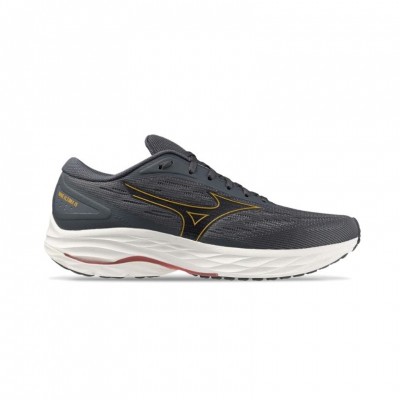In the previous article we talked about the ligaments of the ankle. In this one the topic to be discussed will be the tendons of the same joint. As we already commented, the ankle must be very careful on the part of the sportsman since, who has not had discomfort or some injury in him? It is fundamental the good functioning of this joint for a good performance in our sport practice.
On the tendons we must know aspects like the injuries that take place in them, why they take place, the causes of the same ones and, as we saw in the article on the ligaments, we will discover aspects like the prevention and the treatment of the tendon injuries. This article will focus on all of this and we feel obliged to explain it in the best possible way. Let's begin...
What are tendons?
Tendons are a fibrous connective tissue that join muscles to bones. Their function is to give mobility to the bones.
It is important to explain the difference with ligaments; they join bones to each other (directly) and their function is to keep the structures where they are located (usually joints) stable.

What and how many tendons are there in the ankle?
There are as many tendons in the ankle as there are muscles in the ankle. And we know this from the definition of the tendon itself.
But to talk about all of them would be crazy because of their abundance, and the article could become very long and unproductive due to its length. For that reason we are going to focus on the most important tendons and on those in which more injuries are produced, according to different studies
Tibialis anterior tendon
The tibialis anterior muscle is located at the front of the leg. Therefore, the tibialis anterior tendon inserts into several bones of the foot. In addition, it is an internal muscle and due to it the dorsiflexion movement is performed, that is to say, we can raise the foot upwards.
Tendon of the tibialis posterior
The muscle of this tendon originates in the posterior part of the tibia and is directed downwards to insert itself in the internal part of the ankle in the form of a tendon. It is interesting to note that this tendon is the one that absorbs the impact against the ground (walking, running,...).
Tendons of the extensors of the fingers
They are in charge of extending the toes. They are located along the entire instep and its function is to produce an extension of the toes, except for the big toe, since this extension is performed by the tendon of the tibialis anterior.
Types of tendinous lesions of the ankle
There are several possible tendinopathies (tendon injuries) in the tendons of any muscle. The most common ones that occur in the ankle are:
Tendinitis (inflammation).
The tendinitis or commonly known as ankle sprain is the inflammation of a tendon and is usually produced by a repetitive impact on any surface (usually hard) causing pain, discomfort, discomfort ...
Tendinosis (chronic injuries)
It is produced by a disproportionate tension of the tendon itself and thus come to produce imbalances in the joint that will unfortunately be negative for our performance.
Tendinopathies of insertion
Another sports pathology is that in many situations and for unknown reasons there is discomfort. An example of them are the inflammations in the insertion of the tendon to the muscle that cause us articular pains.
Tendon dislocations
This pathology usually occurs due to traumatisms that cause the tendon to leave its usual route. In this way its function is modified and can cause joint instabilities and more problems.
Partial or total ruptures of the tendon
- Partial ruptures are ruptures of some tendon fibers.
- Total ruptures are ruptures of the entire tendon.

Causes of tendon injuries and differences with ligament injuries
The causes for suffering a tendon injury of ankle are multiple and varied, but most of the times they are produced by an excessive and repetitive use of the tendons (microtraumatisms of the tendons).
The tendons of the ankle are highly mobile. Therefore, they are sensitive to the different overloads to which we expose them. In this way, we can cause the different pathologies described in the previous section.
For example, the tendinitis of the tibialis anterior is produced in most of the times when we overload (traumatisms by impact) the tibialis anterior muscle. Thus, it is very common for this problem to occur when we perform activities such as running (mainly hard surfaces), ball striking (soccer, indoor soccer,...), or other activities such as ballet due to foot rotations.
On the other hand, we believe it is convenient to clarify the differences between ligamentous and tendon injuries. In general, tendon injuries are caused by repetitive impacts that can lead to possible pathologies. On the other hand, ligament injuries are mostly caused by the elongation of the ligament, resulting in a sprain.
Prevention
We saw in the previous article published that proper prevention is necessary to reduce the injury rate (this is our goal) and as we know, there are uncontrollable variables that sometimes and unfortunately make us get injured.
In addition, we believe it is appropriate to comment that many of the tasks performed for prevention serve and can be performed in the treatment phase of the joint injury because in this way we will be preventing a possible relapse of the injury.
For an ideal prevention, at a general level, it is important to do a good warm-up, stretching, strength work (eccentric) and proprioception, work both sides(laterality) and a good invisible training. We will not expand more on this topic because we saw it in the article on the ankle ligaments.
More specific activities and tasks to prevent tendinopathies are:
- Beach work due to its lower impact between your body and the ground and thus improve cushioning, which is ideal for your prevention.
- Mobility exercises with low intensity (for example, in water) to give good mobility to the muscle tissue and vascularize the area.
- Good and appropriate footwear (shoes "customized" for your foot). By individualized we mean that you know what your footprint is (supinator, pronator or neutral) and in this way make the right choice.
- A good physiotherapy session, specifically to prevent this possible injury, if you are prone to tendinosis, tendinitis,...
- Finally, a good training planning is key to the ideal state of our athlete.
Treatment
It is clear that each injury has its specific healing treatment. For a tendinopathy, the objective of the treatment is to prevent the deterioration of the tendon so that there is not the slightest wear and tear and that there is no inflammation of the tendon.
In general, an efficient treatment involves the following steps and advice:
- The first thing we must do before this type of discomfort is rest, ice and elevation; in addition to the intake of anti-inflammatory drugs that will help us to reduce the pain.
- In addition, we must stop the activity or training proposal that is being performed at that time and that is causing this type of injury, to immediately replace them with other more appropriate and less aggressive. For example, if we want to do aerobic endurance and running increases our discomfort, we can replace it with a cycling workout in which there is no impact against any surface.
- Improving running technique is another aspect to take into account so that the movements performed are as efficient as possible.
- The injury can be treated with methods such as cryotherapy and electrotherapy for a decrease in recovery times.
- As well as prevention, stretching, training, massages performed by both your physical trainer and your physiotherapist are key to a good treatment for the improvement of the injury.
- Perform a progressive work to gradually increase the workloads and that the assimilation of the athlete is correct.
- In more extreme situations, it is necessary to use orthopedic devices (different types of orthoses) to avoid as far as possible the tension that our movements exert on the tendon.
- Check the type of footwear used and take into account the pressure that we put on the foot when we tie the shoe. This pressure must be comfortable, for it, in many occasions we will not have to use the eyelet of the shoe (less tight) where we have the pathology, and to alleviate this way the tension and pressure of the zone.
Conclusions
In the present article we have broken down everything that entails the tendiopatías of the ankle to know a little more on one of the most important articulations of our body for the sport practice.
It is important that our athlete knows all the practices of prevention and treatment of injuries that may occur so that, in the event that the injury occurs, recovery times and return to sport are as short as possible.
Finally, we insist that, apart from taking into account all the advice we give you from RUNNEA ACADEMY, it is important that you always have the opinion of a professional, because every injury and every athlete are different and have their own characteristics. In this way, we will get to do a multidisciplinary work, ideal for both preventive work and treatment totally individualized and specific that are the basis of an efficient work.
Read more news about: Sports Injuries



















